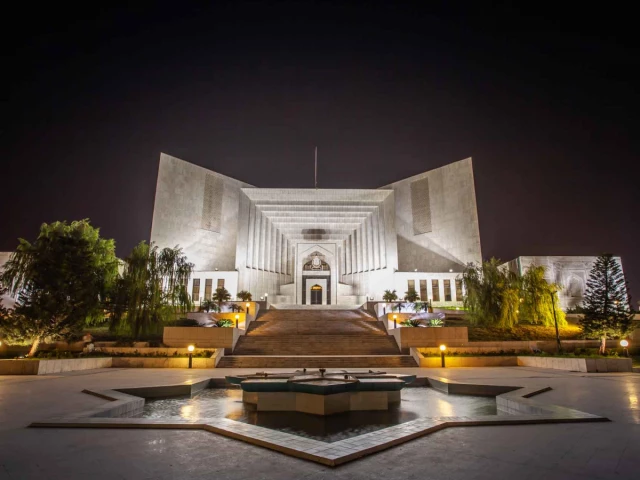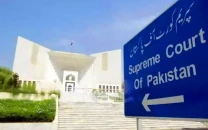SC turmoil deepens as judges spar in open court
26th Amendment seen as catalyst for widening rift

Public discord among Supreme Court judges has intensified following the passage of the 26th Constitutional Amendment, sparking concerns that the growing rifts could further undermine the authority and independence of the country's top court.
On Tuesday, a heated exchange between two members of the Constitutional Bench - Justice Jamal Khan Mandokhail and Justice Ayesha Malik - laid bare the simmering tensions within the apex court during the hearing of the 26th Amendment case.
The disagreement centred on the approval of the Supreme Court Rules 2025. Justice Ayesha Malik is among the four judges who objected to the rules being approved through circulation, while Justice Mandokhail insisted that the rules were duly approved in a full court meeting.
Observers say such public displays of discord among judges have eroded institutional cohesion and tarnished the judiciary's moral authority.
Following the restoration of the judiciary in March 2009, the apex court had enjoyed unprecedented unity under thenchief justice Iftikhar Muhammad Chaudhry, emerging as one of the most powerful institutions in the country.
However, that unity began to fracture during former CJP Mian Saqib Nisar's tenure, when an unpleasant confrontation erupted at the SC Peshawar Registry after Saqib Nisar abruptly dissolved a bench mid-hearing, excluding Justice Qazi Faez Isa without his consent.
Subsequent chief justices, Gulzar Ahmed and Umar Ata Bandial, also presided over courts where visible divisions persisted, culminating in even sharper internal conflicts during the tenure of former CJP Qazi Faez Isa.
Legal analysts argue that the executive branch exploited these divisions, ultimately introducing the 26th Constitutional Amendment last year, a move widely viewed as an attempt to curb judicial independence and bring the judiciary under tighter executive control.
Since the amendment's passage, no concerted effort has been made to restore judicial autonomy. Judges seen as resisting executive influence have reportedly been sidelined, deepening the sense of internal polarisation.
Senior lawyers now point fingers at Chief Justice Yahya Afridi, arguing that the present state of affairs stems from his failure to act decisively. They contend that if the petitions challenging the 26th Amendment had been timely fixed for hearing, the judiciary might have avoided its current predicament.
They also say that instead of approving the SC Rules 2025 via circulation, the CJP could have convened a full court meeting to maintain transparency and unity.
Former additional attorney general Tariq Mahmood Khokhar said the 26th Amendment has "inevitably given rise to two factions within the Supreme Court, one resisting executive dominance and the other eager to collaborate".
"In such a state of affairs, conflict within an institution is inherent," he observed.
"The robe has slipped. The 26th Constitutional Amendment's inherent fault line now stands exposed before the nation. The public clash between two judges in open court is not a matter of personal rancour; it is the outward symptom of a deeper institutional struggle over who defines Pakistan's constitutional order."
"In supreme irony," he continued, "the battleground was the 'Constitutional Bench' itself - a creation of an unrepresentative legislature, conceived and designed not for reform but for control. Its function was to substitute pliancy for independence."
Khokhar further warned that "whatever the eventual outcome, the political and constitutional cost is already evident: an ever more weakened judiciary facing an ever more powerful executive. The judiciary, in effect, stands subordinated to an unelected executive. The Supreme Court today is divided not on questions of law but on tests of loyalty."
He argued that while the amendment was framed in the name of judicial reform, its "real purpose was consolidation of influence. The composition of the Constitutional Bench reflected preference, not principle. Independence was displaced by compliance. A token dissent or two was permitted only to preserve the illusion of plurality".
Khokhar pointed out that the events now unfolding in open court are the direct consequence of the 26th Amendment, which he said created a two-tiered judiciary - one inclined toward the executive and the other toward independence.



















COMMENTS (1)
Comments are moderated and generally will be posted if they are on-topic and not abusive.
For more information, please see our Comments FAQ